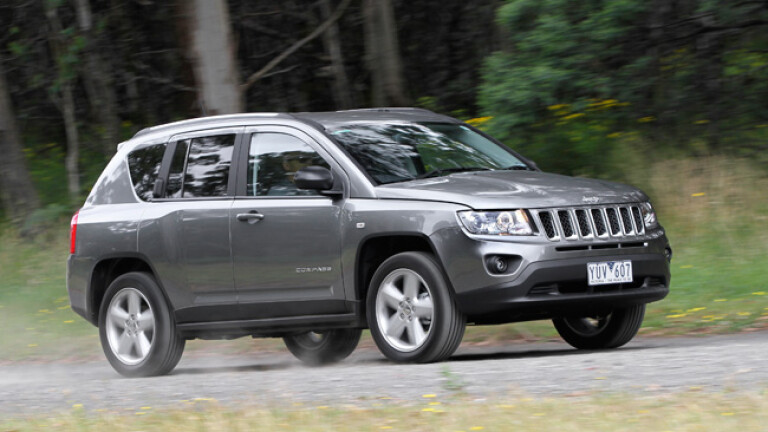
Jeep increases its stake in the softroader game with a return of the Compass.
Jeep has launched the MY2012 Compass onto the Australian market as the brand’s only vehicle available with 2WD, where it joins the Patriot in the fast-growing mid-size softroader segment.
Having undergone a redesign since its predecessor was withdrawn in 2009, the new Compass is certainly the better-looking sibling compared with the characteristically boxy Patriot, drawing heavily on the smoother, more up-market styling of its ‘real 4X4’ cousin, the Grand Cherokee.
The Compass comes in two guises: Sport and Limited, both offered with full-time AWD and lockable centre diff, while the Sport is also available in entry-level front-wheel drive.
With so much competition in this market, Jeep needed to ensure that where it compromised on off-roadability (i.e. with the absence of low-range gearing), it made up for it with on-road performance, decent specs, plenty of extras and attractive styling. First impressions, however, are of a sound but slightly underwhelming addition to the ranks of the likes of the Toyota Rav4 and Nissan X-Trail. However, with a highly competitive and affordable starting price of just $26,500 (for the 2WD manual Sport), it can be forgiven some comparative lack-lustre.
Two engines options are available in the new Compass: a 2.0-litre petrol that delivers 115kW of power at 6300rpm and 190Nm of torque at 5100rpm; and a 2.4-litre petrol with 125kW at 6000rpm and 220Nm at 4500rpm.
At Jeep’s compass launch, we drove the Sport model powered by the 2.4-litre petrol with constantly-variable transmission II (CVT2). While the Compass was quiet and handled comfortably on-road, the 2.4-litre engine felt spiritless and struggled to pull the vehicle’s modest 1480kg (Sport) weight off the line with any amount of gusto. While the Sport is available with five-speed manual as standard, the CVT2 auto (with manual shift mode) is a $2000 option. The Limited is available with CVT2 and full-time AWD only.
Features include electronic stability control, electronic roll mitigation, hill-start assist, front driver, passenger and curtain airbags (surprisingly, driver and front passenger side airbags are available as an option only; $800 on the Sport, $550 on Limited) and 17-inch aluminium wheels (on the Sport).
Additionally, the Limited model features leather-trimmed front and rear seats, six-way driver power seat adjustment and manual lumbar support adjustment, 40GB touchscreen CD/DVD/MP3/HDD radio with Uconnect phone, auto-dimming rear-view mirror and 18-inch aluminium wheels.
The Compass is a vehicle that would suit a young, middle-income family with a Jeep enthusiast in the ranks who’s had to compromise away from a $32k soft-top Wrangler – for practicality reasons – but can’t afford the $45k starting price of the Grand Cherokee – or doesn’t plan on heading far enough off the beaten track to justify it.
Of course, Jeep had no choice but to offer up a contribution to the fastest growing vehicle segment in Australia – and the Compass is without doubt a far more relevant and competitive entry than the increasingly outmoded Patriot. But is the price tag enough to put it in front of its increasingly slick, safe and well-equipped rivals? Only time will tell.

COMMENTS